NEW YORK (AP) — U.S. health officials on Wednesday recommended that people 50 and older get a shot against bacteria that can cause pneumonia and other dangerous illnesses.
The recommendation was made by a scientific advisory panel and then accepted by the Centers for Disease Control and Prevention. The decision lowered — from 65 — the minimum recommended age for older adults to get the shot.
“Now is a great time to get vaccinated against pneumococcal disease in preparation for the winter respiratory season,” CDC Director Dr. Mandy Cohen said in a statement Wednesday night.
The advisory committee voted 14-1 to make the change during a meeting earlier in the day in Atlanta. The guidance is widely heeded by doctors and prompts health insurers to pay for recommended shots.
Pneumococcal shot recommendations are sometimes called the most complicated vaccination guidance that the government issues. The CDC currently recommends shots for children younger than 5 and adults 65 or older, as long as they have never been vaccinated against pneumococcal disease. Officials also recommend the shots for children and adults at increased risk for pneumococcal disease, such as those with diabetes, chronic liver disease or a weakened immune system.
There are more than 100 known types of pneumococci bacteria, which can cause serious infections in the lungs and other parts of the body. Each year, the U.S. sees roughly 30,000 cases of invasive pneumococcal disease, which includes blood infections, brain and spine inflammation, and other illnesses. About 30% of cases are among 50- to 64-year-olds.
The first pneumococcal vaccine was licensed in the U.S. in 1977, and since then pharmaceutical companies have been coming up with newer versions that target a dozen or more types in a single shot. Different vaccines have fallen in and out of favor, including Pfizer’s Prevnar 13, which was once a top-seller but is no longer available.
There are four vaccines now in use. The U.S. Food and Drug Administration this year approved the newest — Merck’s Capvaxive, which can cost around $300 a dose and protects against 21 types, including eight not included in other pneumococcal vaccines. A Merck spokesperson said it was specifically designed to help protect against the bacteria types that cause the majority of severe disease in adults aged 50 and older.
The CDC advisory panel in June recommended the vaccine as an option for adults at higher risk. At the time, the committee also talked about the possibility of lowering the age recommendation for older adults. They noted that illness-causing infections peak at age 55 to 59 in Black Americans — a lower age than what’s seen in white people. But the committee put off that decision until this week's meeting.
Some concerns: A booster shot may prove to be necessary, perhaps in about 15 years. And there are some new vaccines in development that could force another update to the recommendations.
“Pneumococcal has been a very confusing recommendation for many, many years and it’s hard to have a new recommendation every two or three years,” said Dr. Jamie Loehr, chair of the committee’s pneumococcal working group. He was the only person to vote against the proposal.
The Associated Press Health and Science Department receives support from the Howard Hughes Medical Institute’s Science and Educational Media Group. The AP is solely responsible for all content.
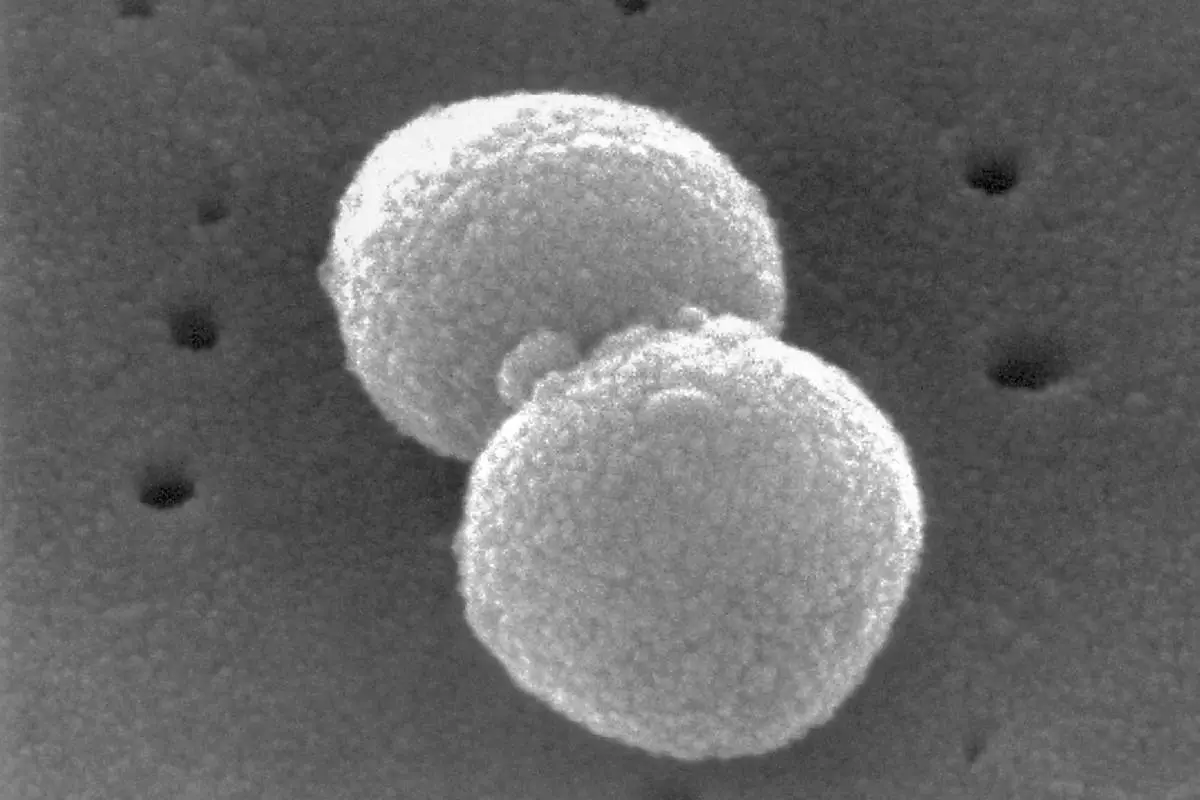
This electron microscopic image provided by the Centers for Disease Control and prevention depicts two, round-shaped, Gram-positive, Streptococcus pneumoniae bacteria. (Janice Haney Carr/CDC via AP)
A food poisoning outbreak tied to McDonald’s Quarter Pounders was caused by a common type of E. coli bacteria that can cause serious illness and death.
Particularly vulnerable are young children, older people or those with weakened immune systems.
About 50 people have fallen ill in the McDonald's outbreak, and one has died, with ages ranging from 13 to 88, according to the Centers for Disease Control and Prevention.
A preliminary investigation suggests raw slivered onions served on Quarter Pounders are a likely source of the outbreak.
Here's what to know about the dangerous germ:
E. coli is a type of bacteria found in the environment, including water, food and in the intestines of people and animals. There are many kinds of harmless E. coli, but a few types can make people seriously ill. The McDonald's outbreak is caused by E. coli O157:H7, which produces a toxin that causes dangerous diarrhea and can lead to kidney failure and other serious problems, according to the CDC.
People can get sick from E. coli poisoning when they consume contaminated foods or through contact with animals, the environment or other people who are infected. Health officials initially focused on fresh slivered onions and beef patties as the possible sources of the McDonald's outbreak. But the beef patties are an unlikely source because of federal requirements for testing meat and McDonald’s protocols that call for cooking it to a temperature that kills the bacteria. The onions are served raw.
Symptoms occur quickly, within a day or two of eating contaminated food, and typically include fever, vomiting, diarrhea or bloody diarrhea and signs of dehydration — little or no peeing, increased thirst and dizziness. The infection can cause a type of serious kidney injury, especially in kids younger than 5. E. coli poisoning in young children requires immediate medical attention.
The type of bacteria implicated in this outbreak causes about 74,000 infections in the U.S. annually, leading to more than 2,000 hospitalizations and 61 deaths each year, according to the CDC. In general, E. coli infections were lower in 2023 than in recent years and cases of severe kidney injury caused by the bacteria remained stable, according to latest federal data.
Food poisoning sickens at least 48 million people in the U.S. each year, including 128,000 who are hospitalized and 3,000 who die. E. coli poisoning is only one cause of such infections. Other germs can make people sick, too. The most common is norovirus, a group of viruses that cause between 19 million and 21 million cases of food poisoning in the U.S. each year, according to the CDC. Salmonella bacteria in food sickens about 1.3 million people. Listeria bacteria cause fewer illnesses, about 1,600 each year, but are responsible for about 260 deaths.
This story has been updated to correct that norovirus is a group of viruses, not bacteria.
The Associated Press Health and Science Department receives support from the Howard Hughes Medical Institute’s Science and Educational Media Group. The AP is solely responsible for all content.
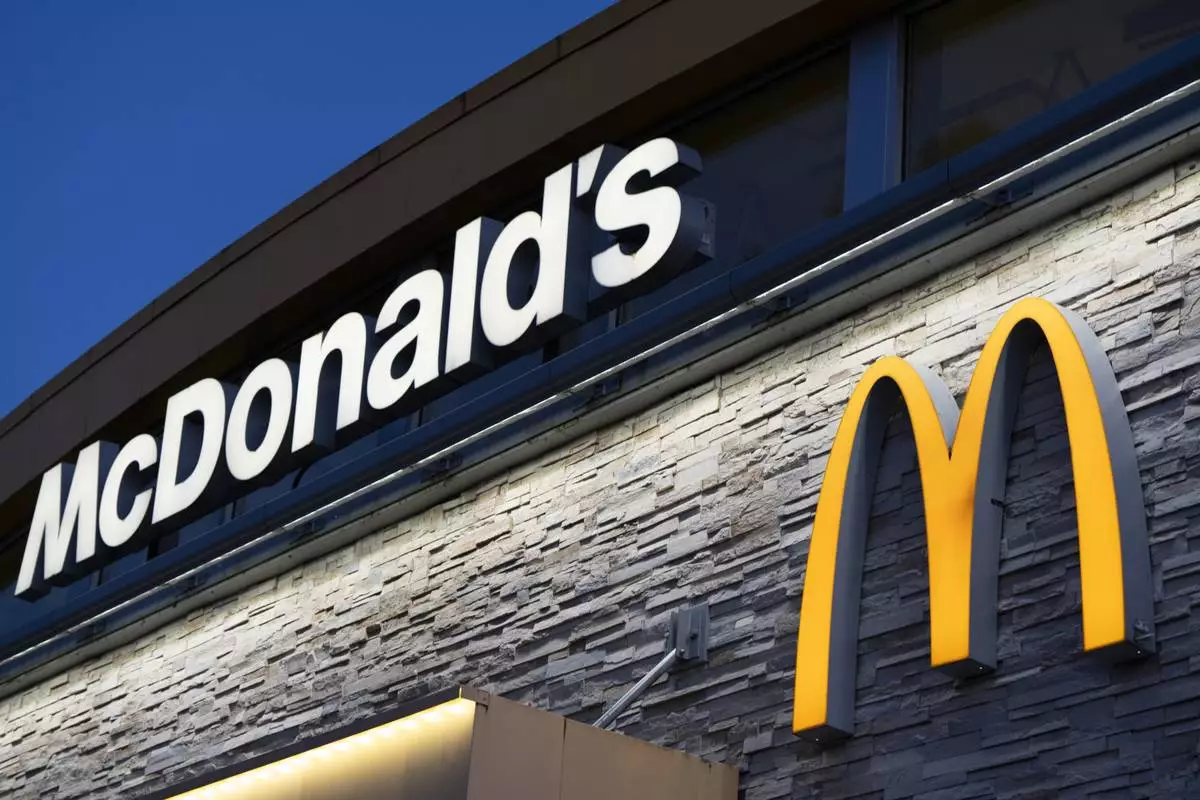
FILE - A sign at a McDonald's restaurant is displayed on April 29, 2024, in Albany, Ore. (AP Photo/Jenny Kane, File)
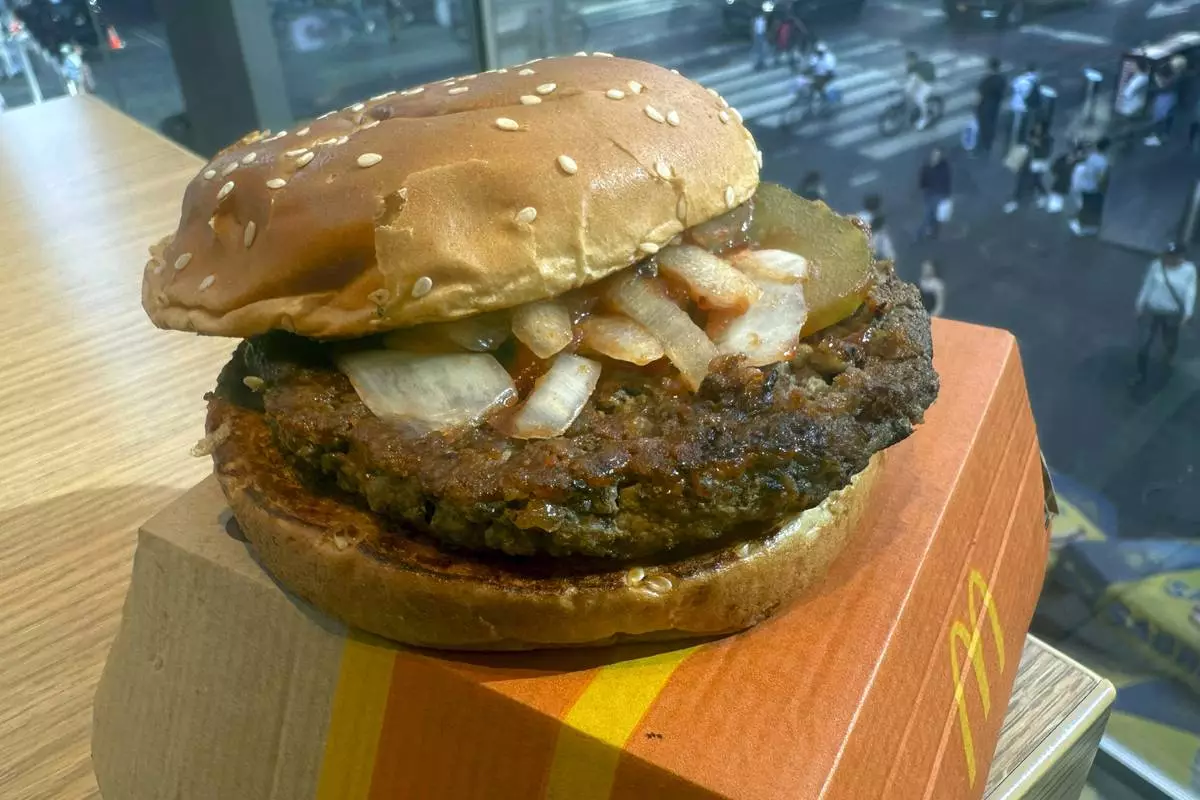
A McDonald's Quarter Pounder hamburger is shown in this photograph, in New York's Times Square, Wednesday, Oct. 23, 2024. (AP Photo/Richard Drew)

Pictured is a McDonald's Quarter Pounder sandwich box purchased Wednesday, Oct. 23, 2024, in Chicago. (AP Photo/Charles Rex Arbogast)
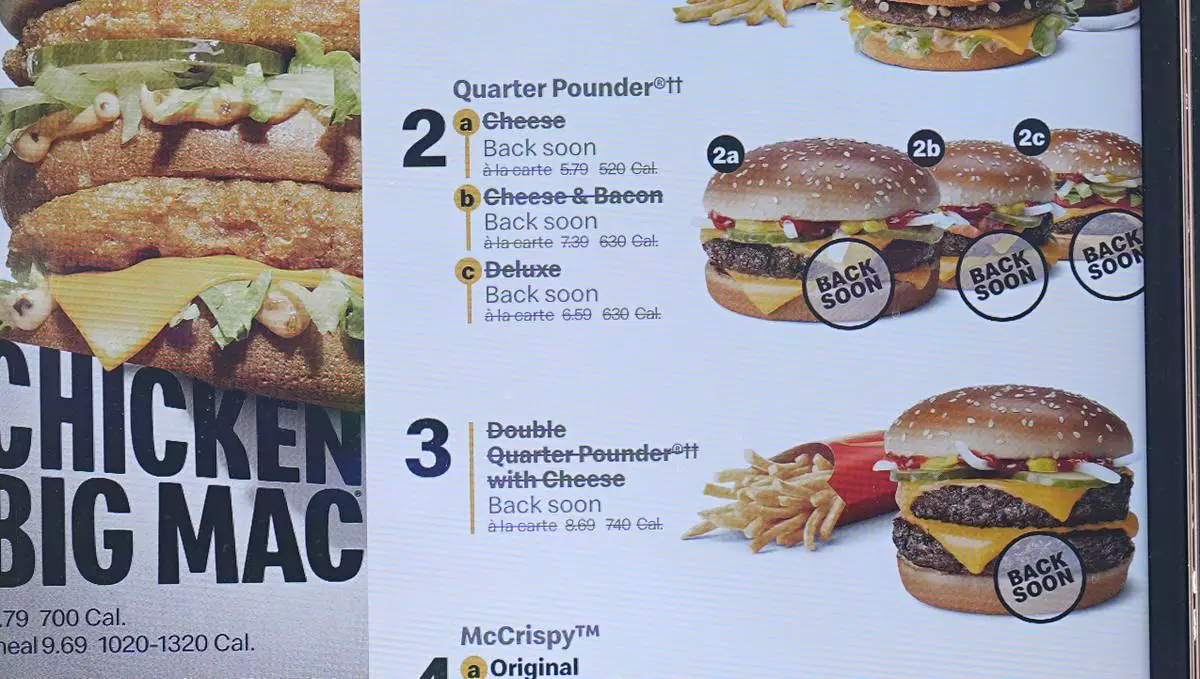
The electronic menu order board still displays Quarter Pounder hamburgers but with a prompt to tell consumers they will be available soon at a McDonald's drive-thru Wednesday, Oct. 23, 2024, in Littleton, Colo. (AP Photo/David Zalubowski)
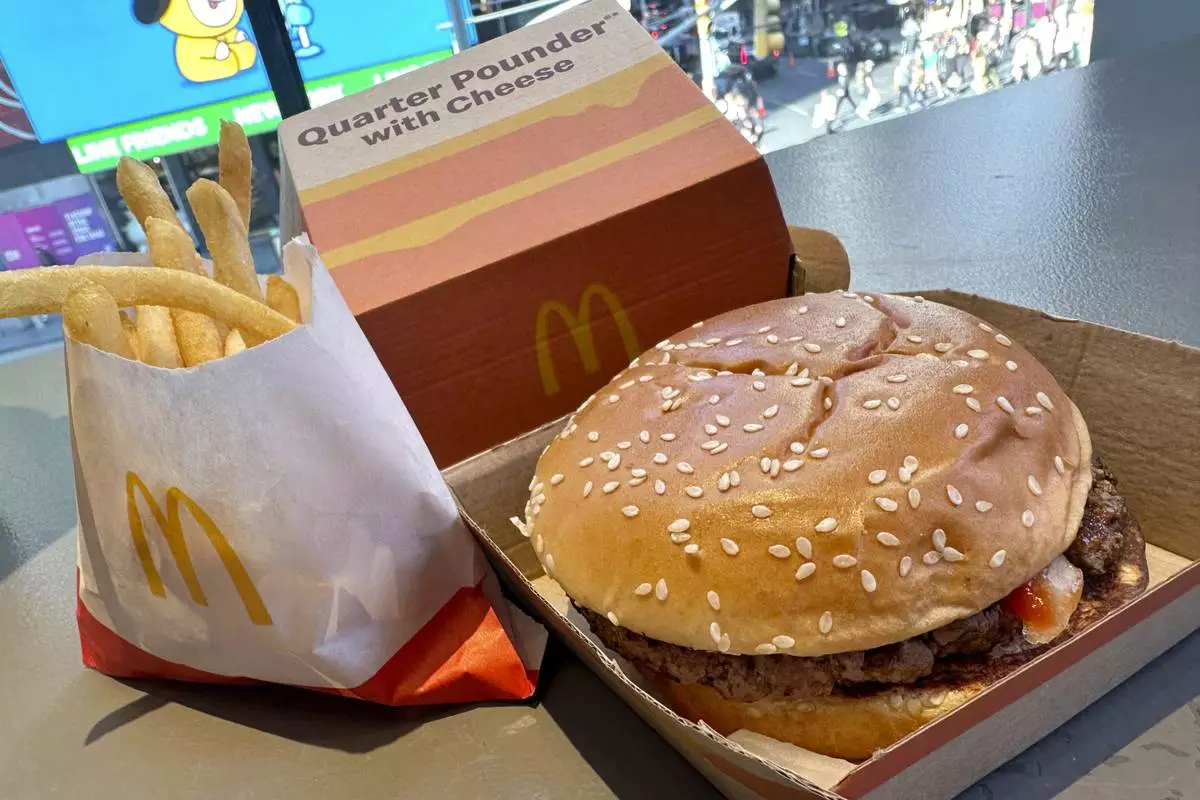
A McDonald's Quarter Pounder hamburger and fries are shown in this photograph, in New York's Times Square, Wednesday, Oct. 23, 2024. (AP Photo/Richard Drew)















